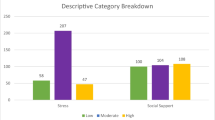‘Being different is a very hard row to hoe.’ ‘The nail that sticks out gets hammered down.’ (Two traditional Japanese sayings.New Internationalist, May 1992, p. 231).
Abstract
Women academics in British universities make up a very small minority and are concentrated in the lower grades. All the statistical evidence points to the fact that a reason for this situation is that discrimination exists in the academic profession. Howerver, very little empirical information exists on the nature of this discrimination and how it operates. The study reported here seeks to contribute to the understanding of this phenomenon by exploring the processes involved, through the perceptions and experience of women academics themselves. A total of 43 women from a British university were interviewed at length, and problem areas were highlighted by their evidence.
There is the problem of being in very small minorities functioning in a male environment. They suffer from isolation and exclusion from their male colleagues, and challenges to their authority from male students. They have fewer support systems, with few role models or mentors, and little access to communication networks. They report problems with work relationships, and experience hostility from male colleagues and students. The majority had experienced discrimination within the university. Finally, the effects of these factors on their perception of themselves as academics are explored. The majority become convinced that the concept of a women academic is problematic. This leads them to put pressure on themselves to perform better than male colleagues, and to avoid being identified with other women. They become ‘honorary men’ and as such are in no position to support other women.
Similar content being viewed by others
References
Acker, S. (1983). ‘Women, the other academics’, in Duduwitz, R.L. (ed.),Women in Academe. Oxford: Pergamon Press.
Acker, S. (1992). ‘New perspectives on an old problem: the position of women academics in British higher education’,Higher Education 24, 57–75.
Adams, H.F. (1983). ‘Work in the Interstices: women in academe’, in Duduwitz, R.L. (ed.),Women in Academe. Oxford: Pergamon Press.
Ainsberg, N., and Harrington, M. (1988).Women of academe: outsiders in the sacred grove. Amherst: University of Massachusetts.
AUT (1992).Sex Discrimination in Universities: Report of an academic pay audit carried out by the AUT research departmentment. Association of University Teachers.
Aziz, A. (1990). ‘Women in UK universities—the road to casualisation?’, in Lie, S.S., and O'Leary, V.E. (eds.),Storming the Tower; Women in the Academic World. London: Kogan Page.
Bardwick, J.M. (1977). ‘Some notes about power relationships among women’, in Sargent, A.G. (ed.),Beyond Sex Roles. St. Paul, MN: West.
Blackstone, T., and Fulton, O., (1975). ‘Sex discrimination among university teachers: a British-American comparison’,British Journal of Sociology 26(30), 261–275.
Clark, S.M., and Corcoran, M. (1986). ‘Perceptives on the professional socialization of women faculty: a case of cumulative disadvantage’,Journal of Higher Education 57, 20–43.
CVCP (1991).Equal opportunities in employment in universities, Committee of Vice-Chancellors and Principals of the Universities of the United Kingdom, (CVCP guidance).
Delamont, S. (1989).Knowledgeable Women: Structuralism and the Reproduction of Elites. London: Routledge.
Dudovitz, R.L. (1983). Editorial in: Dudovitz op cit.
Exum, W.H., Menges, R.J., Walkins, B., and Berglund, P. (1984). ‘Making at the top: women and minority faculty in the academic labor market’,American Behavioral scientist 27, 301–324.
Halsey, A.H. (1992).Decline of Donnish Dominion: The British Professions in the Twentieth Century. Oxford: Clarendon Press.
Hansard Society (1990). The Report of the Hansard Society Commission on Women at the Top. London: Hansard Society.
Hart, A., and Wilson, T. (1992). ‘The politics of part-time staff’,AUT Bulletin, January 8–9.
Hawkins, A.C., and Schultz, D. (1990). ‘Women: the academic proletariat in West Germany and the Netherlands’, in Lie, S.S., and O'Leary, V.E. op cit.
Johnsrud, L.K., and Atwater, C.D. (1991).Barriers to Retention and Tenure at UH-Manoa: The Experiences of Faculty Cohorts 1982–1988. University of Hawaii at Manoa.
Kanter, R.M. (1977).Men and Women of the Corporations. New York: Basic Books.
Kaufman, D.R. (1978). ‘Associational ties in academe: some male and female differences’,Sex Roles 4, 9–21.
Kritek, P. (1984). ‘Women's work and academic sexism’,Educational Record 65, 56–57.
Kulis, S. (1988). ‘The reporesentation of women in top ranked sociology departments’,The American Sociologist, 203–217.
Laws, J.L. (1975). ‘The psychology of tokenism: an analysis,Sex Roles, 51–67.
Lovano-Kerr, J., and Fuchs, R.G. (1983). ‘Retention revisited: a study of female and male nontenured faculty’,Journal of Educational Equity and Leadership 3, 219–230.
Munroe, P. (1919).A Textbook in the History of Education. New York: Macmillan Co.New Internationalist, May 1992, 231.
O'Leary, V.E., and Mitchell, J.M. (1990). ‘Women connecting with women: networks and mentors in the United States’, in Lie and O'Leary (eds.), op cit.
Ross, A.M. (1992). ‘Two decades of higher education’,Higher Education 23, 99–112.
Staines, G., Travis, C., and Jatrente, T. (1974). ‘The queen bee syndrome’,Psychology Today 7(8), 55–60.
Sutherland, M. (1985).Women Who Teach in Universities. Stoke-on-Trent: Trentham Books.
Yoder, J.D. (1985). ‘An academic woman as a token: a case study’,Journal of Social Issues 41, 61–72.
Author information
Authors and Affiliations
Rights and permissions
About this article
Cite this article
Bagilhole, B. Survivors in a male preserve: A study of British women academics' experiences and perceptions of discrimination in a UK university. High Educ 26, 431–447 (1993). https://doi.org/10.1007/BF01383737
Issue Date:
DOI: https://doi.org/10.1007/BF01383737




